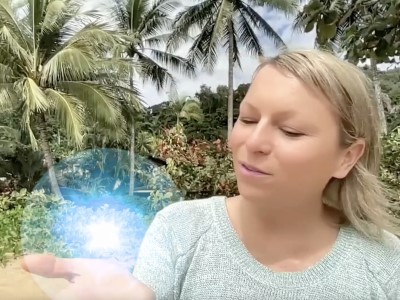Dear Esteemed Colleagues in Hypnotherapy and NLP,
In the vast landscape of holistic wellness, we stand as guardians of transformation, navigating a $5.6 trillion* opportunity with skill and dedication. As practitioners of hypnotherapy and NLP, our expertise is not just a commodity; it's a beacon of hope in an industry driven by the pursuit of well-being.
Together, we have contributed significantly to the exponential growth of this industry, shaping the future of wellness apps, platforms, and therapeutic services.
Consider the staggering figures: the Corporate Wellness market, valued at $53 billion, allocates a substantial portion of its spending to stress management and fitness initiatives. Coaching services, a cornerstone of personal development, amounted to $20 billion in 2020, while therapy services soared to a remarkable $140 billion with projections indicating that therapy services will reach a staggering $300 billion by 2030.*
The opportunities for growth and innovation in our field are limitless.
Yet, amidst this abundance lies a common challenge: creating original hypnotherapy sessions that captivate and resonate with our clients.
Commitment to Excellence
As practitioners committed to excellence, we continuously seek fresh and innovative approaches to meet the evolving needs of those we serve. It is in our collective wisdom, forged through shared experiences and collaborative learning, that we find the keys to unlocking new levels of creativity, effectiveness, and success in our practice.
In my personal journey of professional development, I recently had the privilege of attending a workshop facilitated by Dr. Michael Yapko, a leading authority in clinical hypnosis, focusing on Process-oriented hypnosis. Dr. Yapko's seminal work, "Trancework," and his therapeutic approach have long been sources of inspiration for me. However, despite my admiration for his techniques, I had yet to fully integrate them into my practice.
During the workshop, our attention turned to the theme of impulse control, with a directive to prompt clients to recognize their impulses, desires, and reflexive responses at the onset of hypnosis sessions. Initially, I found this directive intriguing, given my confidence in executing it effectively. However, when attempting to align it with my usual approach of initiating hypnosis sessions with indirect questions, I encountered unexpected challenges.
Indirect Questions
For instance:
"I wonder if you've noticed the rise and fall of your inhale and exhale."
"I'm curious if you can imagine yourself floating on a calm, serene lake."
These questions, with their open-ended nature, foster rapport-building and prime clients for deeper engagement with the hypnotic process. However, when used to address the theme of impulse control directly, I found this approach lacking in efficacy.
The transition felt awkward and ineffective, signaling a need for a different strategy.
In a formal context, the indirect question structure I attempted to employ was as follows:
(Indirect question phrase) + (if or whether) + (subject) + (auxiliary verb) + (main verb) + (object or context).
Yet, despite its familiarity and utility in other contexts, this structure proved inadequate for addressing impulse control effectively.
For example:
"I wonder if you've noticed whether practicing mindfulness enables you to manage impulsive behaviors more effectively?"
This formulation lacks the directness and clarity necessary for effective hypnosis induction. It fails to engage clients in a meaningful exploration of their impulses and reflexive responses, highlighting the inherent limitations of using Indirect Questions in this context.
The Power Of Truisms
Recognizing the need for a more direct and impactful approach, I turned to the power of truisms. Truisms are statements of fact that individuals have experienced so frequently that they cannot deny them.
They provide a direct and effective means of establishing rapport and guiding individuals into a receptive state for hypnosis.
The structure of a truism typically follows this pattern:
"Subject (Verb) + (Noun) + (Expression or Context)."
For instance:
"Many individuals (recognize) the impulse to pause and take a deep breath (as a moment of self-awareness) before responding in challenging situations."
“Others (realize) the impulse (to inhale deeply and then exhale steadily) as a tool for self-control when dealing with sudden urges.”
“Some individuals (acknowledge) the tendency (to inhale deeply and then exhale calmly) for emotional regulation during moments of impulsivity.”
Here, the truism serves as a potent tool for addressing impulse control directly, providing clients with a clear and relatable framework for understanding their experiences. By embracing truisms, we can navigate the complexities of hypnosis induction more effectively, enhancing therapeutic outcomes for our clients.
But the journey doesn't end there.
Refining Our Skills
As practitioners committed to excellence, we must continually refine our skills and explore new avenues for growth and innovation. One such avenue is the re-mastering of the hypnotic induction formula—a structured approach that guides us toward precision and efficacy in inducing a receptive mental state for therapeutic interventions.
Truisms, with their innate ability to resonate deeply with individuals, can be seamlessly integrated into every stage of the hypnotic induction process. From building a response set to establishing an anchor to comfort, truisms serve as versatile tools that can engage both the dominant and non-dominant brain hemispheres, enhancing the effectiveness of trance induction.
"Sooner or later, many people realize the importance of inner peace."
As we embark on the hypnotic induction journey, truisms pave the way for establishing a response set, priming our clients for deeper engagement with the therapeutic process. By presenting truisms that resonate with their experiences, we lay the groundwork for a receptive and responsive state.
"In every culture, most people (experience) a sense of calmness and relaxation (when they envision) taking a vacation."
Furthermore, truisms can provide a sense of familiarity and reassurance amidst the hypnotic journey. Whether it's recalling comforting memories or envisioning serene landscapes, truisms offer a pathway to relaxation and emotional regulation.
"In every individual's life, comforting memories (bring) a sense of solace and reassurance (as they recall) moments of warmth and joy."
The Freedom to Explore
As hypnotherapists, we have the freedom to explore various truisms, allowing for a personalized and dynamic approach to trance induction.
Ultimately, the choice to re-explore truisms lies with us, and it's through this exploration that we continually refine our practice and enhance therapeutic outcomes.
“Many recognize the International Hypnosis Association as a beacon of knowledge and expertise, guiding practitioners toward success and fulfillment in their hypnotherapy careers.”
“Others appreciate the International Hypnosis Association's efforts to raise awareness and promote the benefits of hypnotherapy as a legitimate therapeutic modality.”
“Some individuals cherish the sense of belonging cultivated within the International Hypnosis Association, fostering camaraderie and mutual support among members.”
Conclusion
In conclusion, as we navigate the ever-evolving landscape of holistic wellness, let us embrace the power of collaboration, reflection, and innovation. By harnessing the collective wisdom of our community and exploring new approaches to trance induction, we can unlock new levels of creativity, effectiveness, and success in our practice. Together, let us continue to make a profound impact on the lives of our clients while seizing the boundless opportunities that lie ahead.
Warm regards,
Julie Sulter
“Your subconscious mind acknowledges your investment in reading this article. Its innate talent for processing truisms is a gift worthy of pride.”
*The figures quoted above were sourced from the following webpages:
- The global wellness market is massive – it's currently valued at a whopping $5.6 trillion and projected to grow to $8.5 trillion by 2027. You can check out more info about it here.
- Coaching federation source .
- Coaching stats, you can find them here.
- Global behavioral therapy market, it's expected to grow even more, reaching $295.14 billion by 2030 with a CAGR of 8.5%. You can read more about it here.
**Disclaimer: All member articles, of which this is one, express the knowledge and opinions of the member author only. The IHA supports our members in expressing their knowledge and opinions. The IHA is not responsible for any data, quotes, claims, alleged facts or opinions expressed by the author. Member articles are presented for entertainment purposes only.






